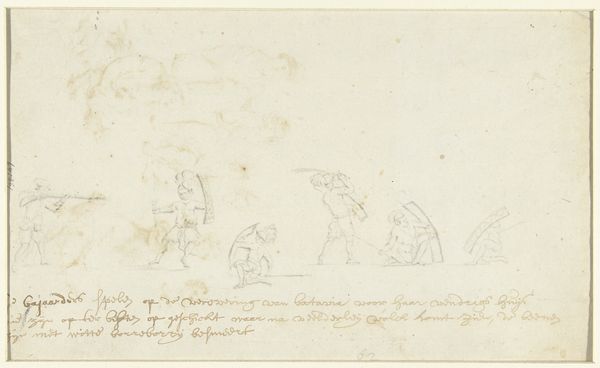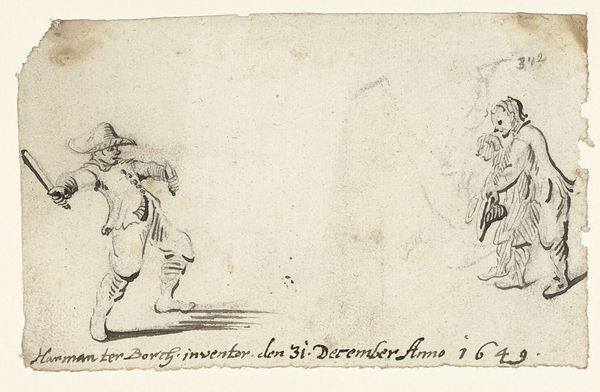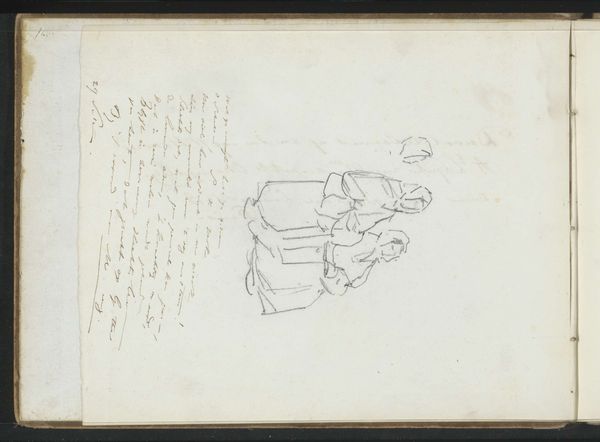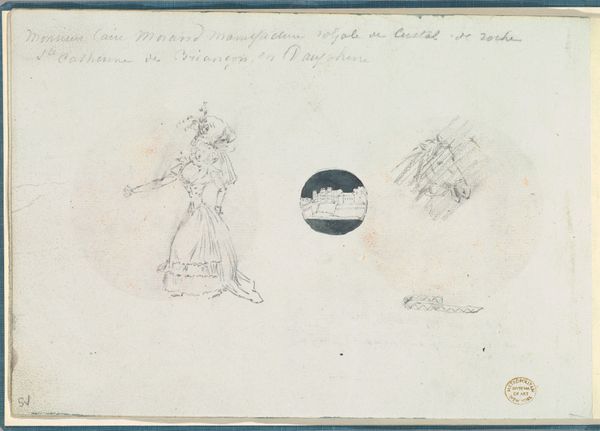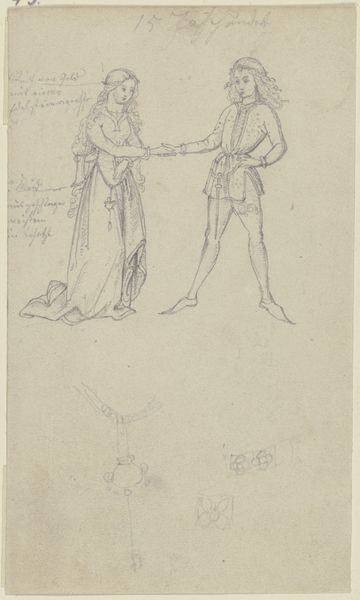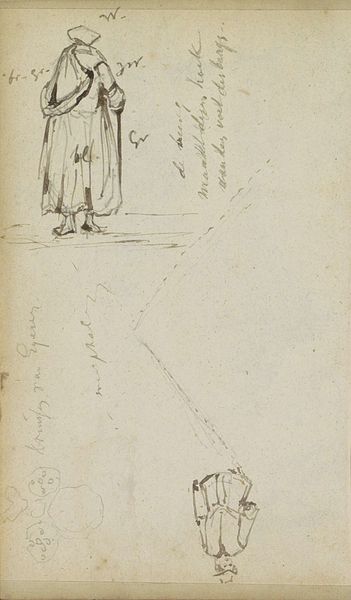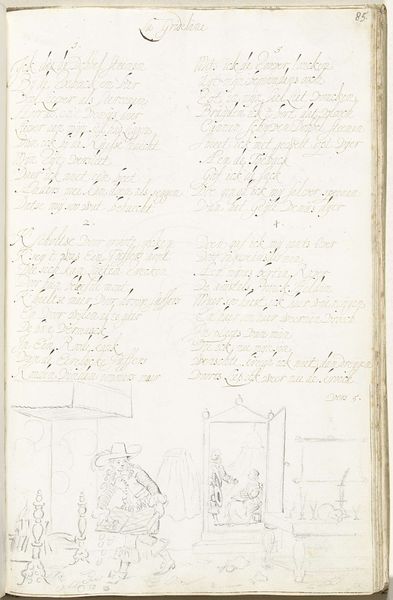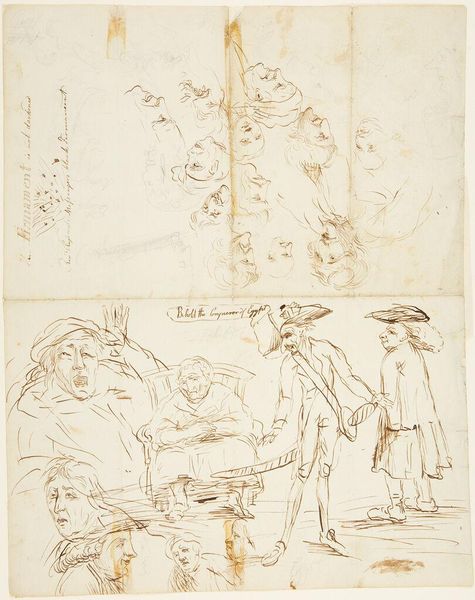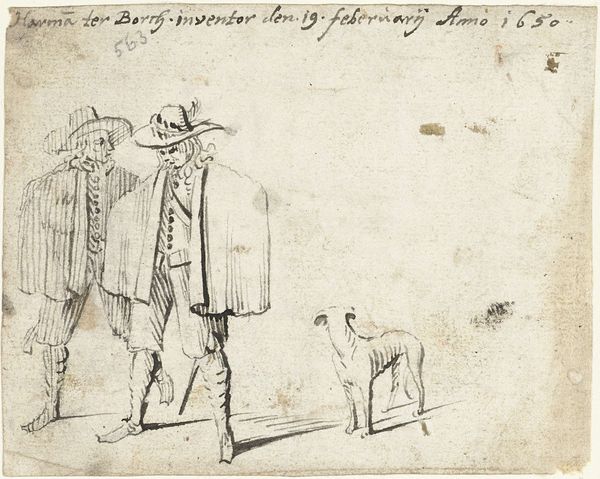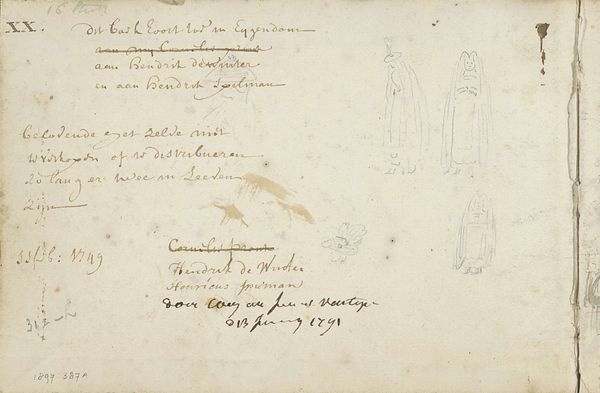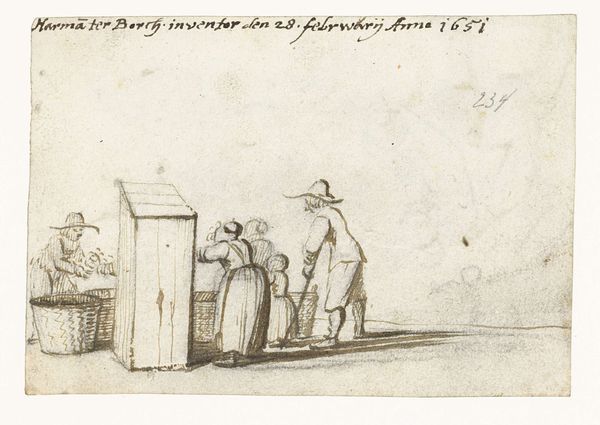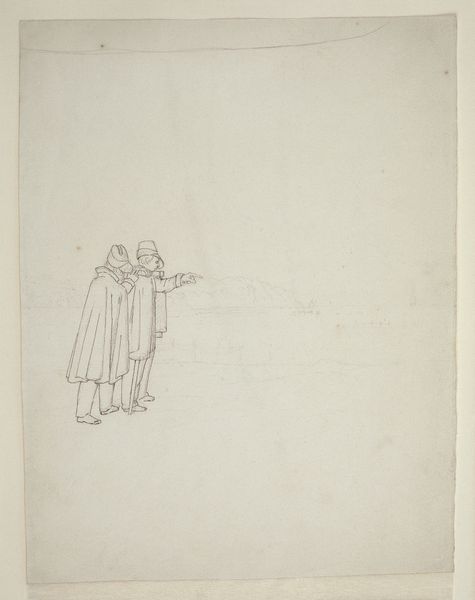
drawing, paper, pencil
#
drawing
#
dutch-golden-age
#
paper
#
pencil
#
genre-painting
Dimensions: height 116 mm, width 201 mm, height 165 mm, width 212 mm
Copyright: Rijks Museum: Open Domain
Editor: This is a drawing called "Nacht: een stel lopend achter een vrouw met een lantaarn," or "Night: A couple walking behind a woman with a lantern" by Gesina ter Borch, dating from around 1655. It’s a pencil drawing on paper, and it has a really ephemeral, sketch-like quality. I am curious about the depiction of women in daily life in the Dutch Golden Age. What do you see in this piece? Curator: It's fascinating how Ter Borch uses simple lines to convey so much about social dynamics, isn’t it? The woman with the lantern is literally and perhaps metaphorically illuminating the way. Think about the social position of women during the Dutch Golden Age, particularly within a patriarchal society. The presence of a woman leading at night challenges the traditional gender roles and power structures of the time. The poem inscribed on the drawing reinforces the themes that relate to women's life: it talks about nightshifts, children, exhaustion. Does this imply that women are not only carrying literal lanterns but also social burdens? Editor: I never thought of the lantern as representing power or perhaps even autonomy. Is it unusual for women to be out alone at night? Curator: Exactly! Considering safety in urban environments wasn’t a guarantee, and women’s movement was more policed, her independence is striking. Is Ter Borch also making a comment about women's labor in those times, the labor needed to literally brighten everyone's life? Editor: So, by portraying a woman leading the way with a lantern, Ter Borch challenges the period’s conventions and celebrates female agency? Curator: Precisely. It reframes our understanding of genre scenes. Now we see beyond domesticity towards commentary of labor and societal roles. Editor: This reframing offers a whole new understanding of the image. I will see drawings of this era from a new point of view now!
Comments
No comments
Be the first to comment and join the conversation on the ultimate creative platform.
